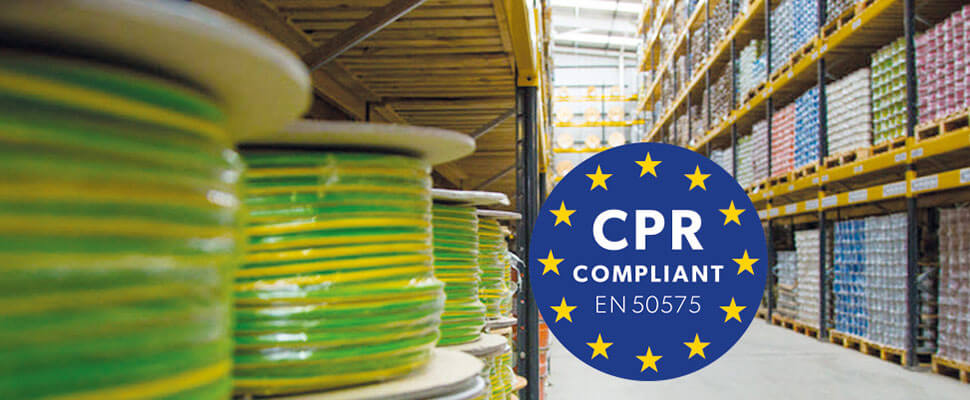CPR Cable Compliance - The Construction Products Regulation
Just looking for the CPR headlines?
WHAT IS CPR FOR CABLES?
Building and construction cables manufactured after 1st July 2017 are subject to the Construction Products Regulation (CPR). CPR covers all construction products, including electrical cables, classifying them by their reaction to fire. Any products already on the market prior to this date can continue to be sold and supplied without reference to CPR. The purpose is to create harmonised product standards and a common language across Europe and help buyers make better informed decisions. It should be remembered that whilst it is mandatory for all European countries, the minimum requirement CPR Euro classifications may vary from country to country. Some countries have implemented a minimum classification, some have adopted a risk assessment approach, whilst others like the UK (which continues to require compliance as of 2021) have no minimum but recommend an Eca classification and above.
Compliance with CPR is mandatory and has implications throughout the supply chain but the majority of the responsibilities lie with manufacturers, importers and distributors. They have a legal requirement to ensure it is only CPR compliant cables placed on the market from 1st July onwards, in addition to complying with the other standards and regulations the cables must meet.
WHAT ARE THE CPR CABLE RATINGS?
Products are tested and certified with a Euroclass ranging from A to F depending on their flame characteristics (with additional classifications for their smoke, flaming droplets, and acidity as required by classification).

WHAT IS CABLE CPR COMPLIANCE?
CE Labelling - This is the quickest way to identify a CPR compliant cable. CE marking is already a legal requirement, but now it needs to contain additional information to aid traceability, including the CPR classification. CE labels can be on the cable or the cable packaging. For cables manufactured after 31st Dec 2020 and destined for installation in the UK, the UKCA mark must be applied (likely dual marked with CE) - although there is a transition period through to 1st January 2023 where cables will be accepted with CE marking alone.
Cable Testing by a Notified Body - Conducted independently of manufacturers and suppliers, an Assessment and Verification of Constancy of Performance (AVCP) is required to determine the classification. There are now separate bodies for UK CPR testing.
A Declaration of Performance - Eland Cables holds the DoP documentation on file for the statutory period of 10 years in the event it is called upon for traceability.
SO WHAT DO I NEED TO DO?
As the end user you have a responsibility to check CE labelling is present on the cable or the packaging, and to check there is a CPR classification where appropriate. Remember, this is for fixed installations so equipment wiring and other applications are not covered. Keep in mind that cables placed on the market prior to July 2017 are not subject to this legislation and so can continue to be installed. You are urged to be practical in the selection and specification of cables - the right cable for your application may not be available with the CPR class you seek. Equally importantly, the cable selected must continue to meet other national, international, and industry standards.
Each installation should be considered in light of country-specific regulations. The cable industry continues to recommend Low Smoke Zero Halogen insulated and sheathed cables where smoke and toxic gas emissions could pose a threat to life and sensitive equipment.
TALK TO THE CABLE EXPERTS
Our technical experts sit on national standards committees and so are at the heart of the CPR adoption and compliance process. If you would like more information on how this legislation affects you, our technical team offers CPD-certified CPR training sessions. For more complex requirements we can also provide tailored training courses covering specific aspects of CPR in the context of your specific project or supply chain.
If you're in any doubt, please contact our experts by emailing cpr@elandcables.com and they will help you demonstrate traceability and compliance.

Eland Cables confirms it is fully compliant with the requirements of the Construction Products Regulation (CPR)
CPR CPD Cable Training
For companies wanting to learn more about CPR compliant cables
CPD certified cable training
Our Portfolio
Supplying a wide range of CPR compliant cables across all relevant cable types
Cables By Type